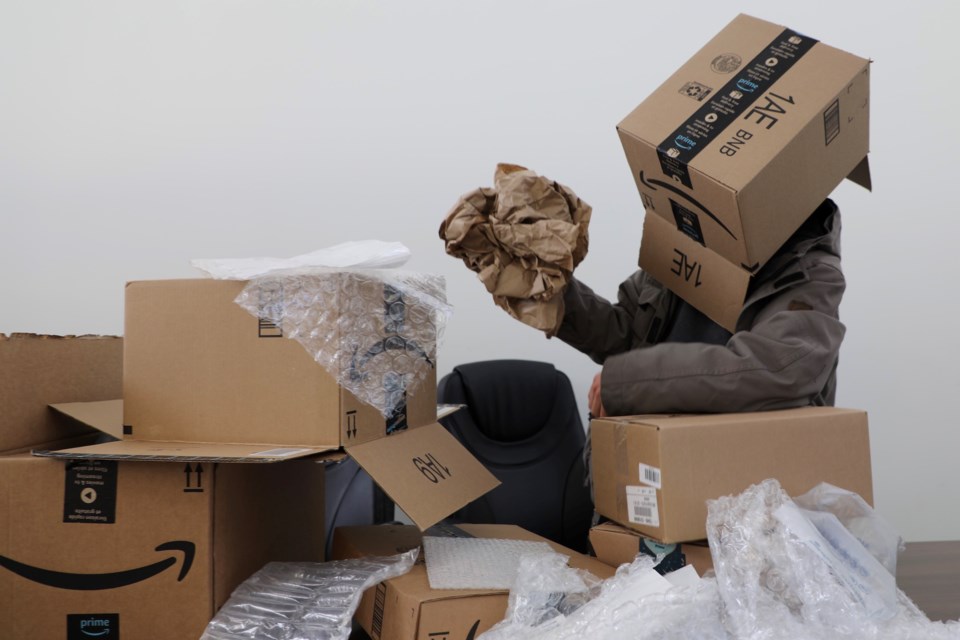So you’ve wrapped all your gifts, unpacked Christmas dinner and now your home is buried in Amazon boxes and takeout containers. Could this have been avoided?
The COVID-19 pandemic has seen stores and customers pivot to online orders and delivery as the main ways to shop as health measures restrict or ban in-store service. With Canada Post reporting that some 48 per cent of Canadians planned to do most or all of their shopping online this year, many St. Albert residents will likely have a sizeable stock of waste packaging this holiday season.
While she didn’t have exact volumes, City of St. Albert waste and diversion program supervisor Olivia Kwok said the city’s contractors have definitely seen an uptick in cardboard collected at the curb this year due to an upswing in e-commerce.
What to do with waste
Delivery in and of itself is a wasteful process, said Sean Stepchuk of Waste Free Edmonton, as under normal circumstances you can eat in a restaurant or shop in person. Anything you do get delivered often comes with excess packaging or add-ons – boxes in boxes wrapped in plastic, for example, or those wads of napkins and ketchup packets.
Delivery often involves cars on the road, which means more greenhouse gas emissions. A February 2020 study by Radboud University’s Sadegh Shahmohammadi found that ordering an item from an online-only store resulted in about 0.18 kg of emissions per item, compared to just 0.1 kg per item for driving to the store yourself.
In an email, Shahmohammadi said this was because online orders often have the most packaging and the fewest items per order, and were often shipped from multiple locations, which means more transportation.
Reducing this waste starts before you click that order button.
“The best option is to just don’t buy stuff,” Stepchuk said – get someone an experience you can do together, make your own gift or cook dinner in-house instead.
If you do have to buy something, Stepchuk said to get it from a local business to reduce the amount of transportation energy used, and ask them to leave out extras such as napkins and utensils. Smaller stores may be more willing to use less or more sustainable packaging, or to let you use your own containers for takeout. For big online stores, try to group your purchases into as few shipments as possible.
Delivery made sense from a carbon perspective if you were ordering goods (say, groceries) from a local store and had to drive, Shahmohammadi found. Because stores can deliver to many people using just one vehicle, they produce fewer greenhouse gas emissions (0.07 kg/item) than having everyone drive their own cars to them (0.1 kg/item). If you could walk or bike to the store, however, in-person pickup produces almost zero carbon waste.
Much of the packaging from online orders can be recycled. St. Albert’s recycling contractor does not accept those hard plastic takeout containers as it isn’t set up to process them, Kwok said. She recommended washing and reusing them instead.
Clean cardboard boxes should be flattened and left at the curb or tossed in the compactor at the Mike Mitchell Recycling Depot, Kwok said. Stained cardboard or paper takeout containers should go in the green compost bin unless they are coated in wax or plastic, in which case they have to be trashed. You can take your chunks of clean Styrofoam to the depot, but should put any stained material or takeout containers in the garbage.
Boxes, bubble wrap, and Styrofoam can also be reused. Take them to the Reuse Centre once it reopens, or check Waste Free Edmonton’s Facebook page to find folks who can give your trash a second life.
Check St. Albert’s Be Waste Wise App for more tips on what to do with delivery waste.




